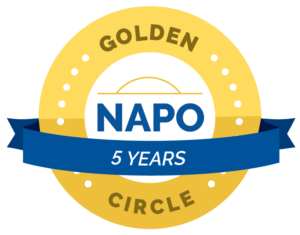It’s not uncommon for some of my clients to exhibit strong emotions during our coaching sessions. Actually, I encourage it.
Why? If there’s no emotion, it may be a sign that we don’t care. If we don’t care, it’s hard to make progress.
Years ago, in my coach training, a colleague uttered the words “there’s motivation in emotion.” I could not agree more!
According to Psychology Today, “Exploring our emotions is a worthy endeavor for anyone hoping to know and develop themselves, build healthy relationships, and pursue what they want in life. Recent research has even suggested that emotional intelligence is more important than IQ showing that it “predicts over 54% of the variation in success” in relationships, health, and quality of life.”
There are two primary types of emotions:
Primary emotions are reactions to an event, for example, anger.
Secondary emotions are reactions to the primary emotion and are mainly learned, for example, the shame emotion may be associated with the anger emotion (“I’m so ashamed that I yelled at you because I was angry.”).
There are multiple theories of emotion, but most focus on four main components:
- External stimulus
- Physiological arousal
- Mental processing
- Emotion
How do these play out?
External stimulus: A bear charges you while you are on a hike.
Physiological response: Your heart starts racing.
Mental processing: Your brain says, “Run!”
Emotion: Fear
Hopefully, you are not often chased by a bear, but these same components come up in varying degrees often in our lives.
Here’s one I heard recently:
External stimulus: Housemate didn’t do the dishes. Again.
Physiological response: Head throbs, shoulders tighten.
Mental processing: Brain says, “What an inconsiderate jerk. I need to find a new roommate. They never do anything they say they are going to do.”
Emotion: Anger
The question is, what do we do with the anger emotion? What are our options?
- Short-sheet their bed.
- Stew about it and say nothing.
- Initiate a conversation.
The emotion is signaling that something needs to happen. In the example of the bear, run. In the case of the dishes, I’d suggest having a conversation.
Takeaway: When emotions come up, don’t discount them. Don’t repress them. Don’t think they are silly or wrong. Don’t let them pass without analysis. Listen to what the physiological response is trying to tell you and act. Get motivated to take action.
Yes, indeed, there is motivation in emotion.
Cindy Jobs
Looking for more information?
Click here for ADHD-friendly Time Management Tools
Click here for 15-minute organizing tips.
Click here to schedule a complimentary breakthrough session.
For more helpful information, follow me on Facebook.



Attention Deficit Disorder Association
National Association of Productivity & Organizing Professionals
International Coach Federation
Institute for Challenging Disorganization
Level I Certificates earned in Chronic Disorganization; ADD; Client Administration; Time Management; Mental Health; and Hoarding.
Level II Specialist Certificates earned in Chronic Disorganization and ADHD.







